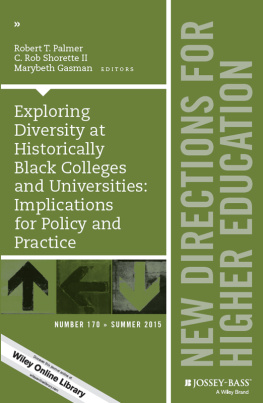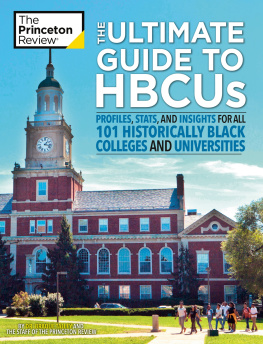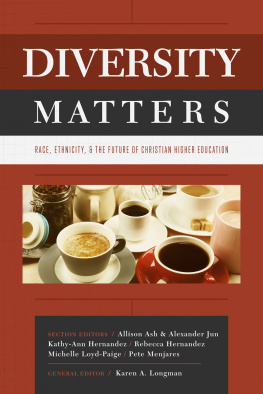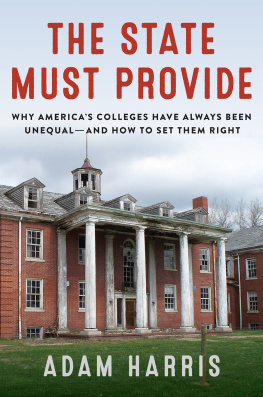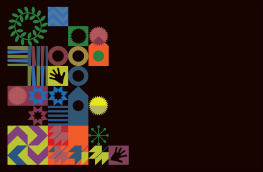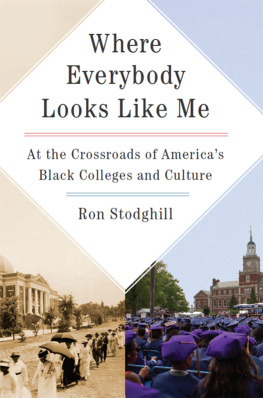
EXPLORING DIVERSITY AT HISTORICALLY BLACK COLLEGES AND UNIVERSITIES: IMPLICATIONS FOR POLICY AND PRACTICE
Robert T. Palmer, C. Rob Shorette II, Marybeth Gasman
New Directions for Higher Education, no. 170
Betsy O. Barefoot and Jillian L. Kinzie, Co-editors
Copyright 2015 Wiley Periodicals, Inc., A Wiley Company. All rights reserved. No part of this publication may be reproduced in any form or by any means, except as permitted under sections 107 and 108 of the 1976 United States Copyright Act, without either the prior written permission of the publisher or authorization through the Copyright Clearance Center, 222 Rosewood Drive, Danvers, MA 01923; (978) 750-8400; fax (978) 646-8600. The copyright notice appearing at the bottom of the first page of a chapter in this journal indicates the copyright holder's consent that copies may be made for personal or internal use, or for personal or internal use of specific clients, on the condition that the copier pay for copying beyond that permitted by law. This consent does not extend to other kinds of copying, such as copying for general distribution, for advertising or promotional purposes, for creating collective works, or for resale. Such permission requests and other permission inquiries should be addressed to the Permissions Department, c/o John Wiley & Sons, Inc., 111 River Street, Hoboken, NJ 07030; (201) 748-6011; fax (201) 748-6008; www.wiley.com/go/permissions.
Microfilm copies of issues and articles are available in 16mm and 35mm, as well as microfiche in 105mm, through University Microfilms Inc., 300 North Zeeb Road, Ann Arbor, MI 48106-1346.
NEW DIRECTIONS FOR HIGHER EDUCATION (ISSN 0271-0560, electronic ISSN 1536-0741) is part of The Jossey-Bass Higher and Adult Education Series and is published quarterly by Wiley Subscription Services, Inc., A Wiley Company, at Jossey-Bass, One Montgomery Street, Suite 1200, San Francisco, CA 94104-4594. Periodicals Postage Paid at San Francisco, California, and at additional mailing offices. POSTMASTER: Send address changes to New Directions for Higher Education, Jossey-Bass, One Montgomery Street, Suite 1200, San Francisco, CA 94104-4594.
New Directions for Higher Education is indexed in Current Index to Journals in Education (ERIC); Higher Education Abstracts.
Individual subscription rate (in USD): $89 per year US/Can/Mex, $113 rest of world; institutional subscription rate: $335 US, $375 Can/Mex, $409 rest of world. Single copy rate: $29. Electronic only--all regions: $89 individual, $335 institutional; Print & Electronic--US: $98 individual, $402 institutional; Print & Electronic--Canada/Mexico: $98 individual, $442 institutional; Print & Electronic--Rest of World: $122 individual, $476 institutional.
Editorial correspondence should be sent to the Co-editor, Betsy O.
Barefoot, Gardner Institute, Box 72, Brevard, NC 28712.
Cover design: Wiley
Cover Images: Lava 4 images | Shutterstock
www.josseybass.com
Editors' Notes
A report from the Center for Minority Serving Institutions at the University of Pennsylvania has underscored the changing racial demography of historically Black colleges and universities (HBCUs) (Gasman, 2013). Specifically, this report has shown that the population currently enrolled in HBCUs is made up of roughly 76% Black students, with the remainder composed of other racial and ethnic groups. Indeed, the racial demography of HBCUs looks completely different today from in the 1950s when the student body of HBCUs was nearly 100% Black. Despite the increase in the enrollment of non-Black students at HBCUs, limited research has examined the experiences of racially and ethnically diverse students as well as other underrepresented students at these institutions.
Interestingly, while research has shown that HBCUs have always welcomed racially and ethnically diverse populations (Foster, Miller, & Guyden, 1999), research has noted that some stakeholders at HBCUs feel that the increasing diversity, both racial and otherwise, of Black colleges could radically change their institutional culture, climate, and mission, thereby threatening the historical mission and environment of these institutions. In fact, some feel that the preservation of the traditional climate of HBCUs is critical because it has been a salient facilitator of Black student success (Gasman, Baez, Drezner, Sedgwick, & Tudico, 2007).
Currently, more Black students are opting to attend predominantly White institutions and for-profit institutions than in years past (Patton, 2012). That fact, coupled with the impact of court cases (e.g., Adams v. Richardson, 1972, and United States v. Fordice, 1992), has compelled public HBCUs to increase the racial diversity of their campuses. Therefore, the number of non-Black students enrolling in HBCUs may continue to increase (Gasman et al., 2007). To respond to this likelihood, it is critical that the higher education community in general and HBCU leadersadministrators and key stakeholders specificallyengage in meaningful discourse about how these institutions can more intentionally embrace the changing demography on their campuses, especially in light of the concerns posed by some stakeholders. It is important to note that while this volume places particular attention on discussing the changing racial demography of HBCUs, it also discusses and provides critical context on other minority populations. Indeed, the volume seeks to examine the complexities of this issue and offer recommendations for practice, policy, and future research to help HBCU leaders engage this critical issue.
In the first chapter, Marybeth Gasman and Thai-Huy Nguyen provide the foundation for this volume by providing some historical and contemporary context about diversity at HBCUs. In doing this, they challenge five myths related to diversity at HBCUs. These myths range from the racial makeup of the faculty at HBCUs to the perception that HBCUs are not able to help advance the nation's higher education goals. In Chapter 2, John Michael Lee Jr. calls attention to the institutional diversity of HBCUs. Moreover, while he also provides insight into these institutions racial diversification, he argues that HBCUs must look beyond race and ethnicity to consider other forms of diversity, such as socioeconomic status, sexual orientation, and international status. In Chapter 3, Derek F. Greenfield, Tony Innouvong, Richard Jay Aglugub, and Ismail A. Yusuf reflect on their experiences as diverse students and professionals at an HBCU and discuss how these experiences impacted their racial and cultural identity development.
In Chapter 4, C. Rob Shorette II and Andrew T. Arroyo use national data to draw a picture of White students enrolled at 4-year HBCUs. In this chapter, they argue that despite the media's emphasis on an increase in the enrollment of White students at HBCUs, data show that a disproportionate number of White students are enrolling at 2-year, rather than 4-year, HBCUs. In Chapter 5, Robert T. Palmer, Dina C. Maramba, Taryn Ozuna Allen, and Ramon B. Goings provide an overview of factors that encourage Latino/a students to attend an HBCU, and they discuss the experiences of those students at a Black college. In Chapter 6, Steve D. Mobley Jr. and Jennifer M. Johnson draw from the extant literature on HBCUs to discuss some of the challenges that lesbian, gay, bisexual, and transgender (LGBT) students encounter at these institutions. They also provide a set of best practices to help HBCUs create a more affirming and inclusive campus climate for LGBT students.
In Chapter 7 of this volume, Valerie C. Lundy-Wagner provides an overview of how discussions of diversity have been treated in the existing literature on HBCUs. She also delineates how embracing a more expansive definition of diversity, beyond a Black-White paradigm, could provide HBCUs with leverage to become more engaged in the postsecondary policy arena. C. Rob Shorette II offers final thoughts to differentiate the contributions of this volume from other literature that focuses on HBCUs. He suggests a number of potential lines of future scholarly inquiry that would expand and enrich the knowledge base on diversity and HBCUs.
Next page
